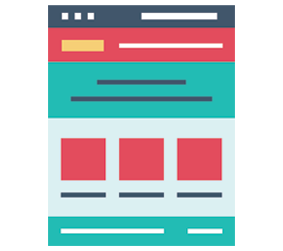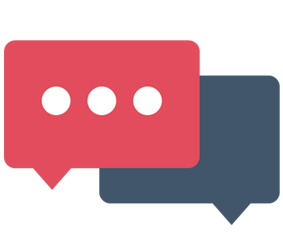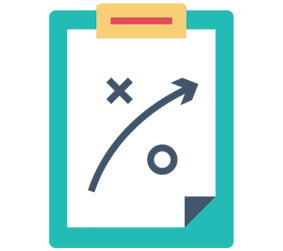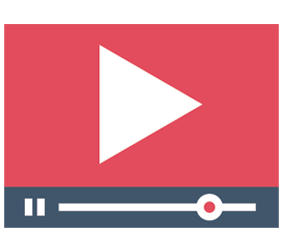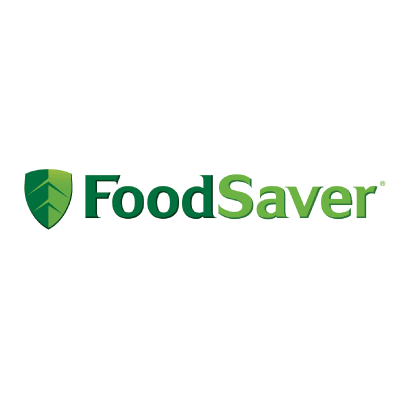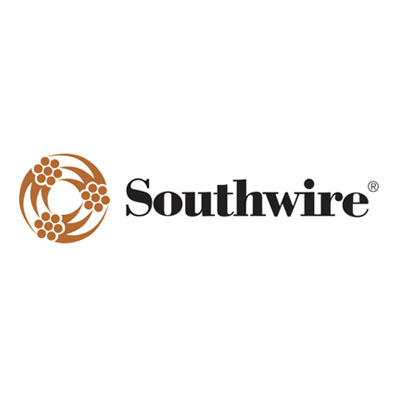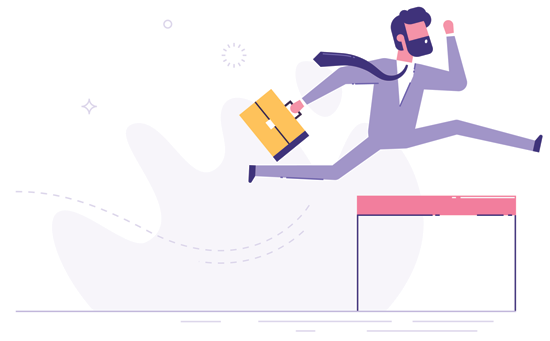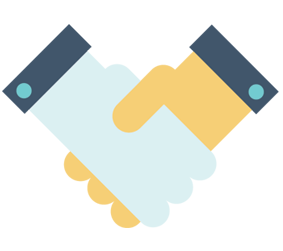This is the ultimate guide to maximizing your case interview prep. Completely updated for August 2023.
And let us be clear about something.
You’re going to learn case interview secrets, the top tips for success, and a case grading cheat sheet that you won’t find anywhere else.
We offer exclusive MBB ex-interviewer content. It’s not from ex-consultants who never gave cases.
Yes, we’ll cover consulting interview questions and answers, case interview frameworks, and realistic case interview examples.
But even better, you’re going to learn a proven 5 step prep plan that is the #1 reason our readers get triple offers from McKinsey, BCG, and Bain.
So if you’re looking to get the most out of your consulting interview preparation this year, you’ll love this guide.
Stop sifting through infinite online resources. Save time by trying our Comprehensive Interview Prep Course.
Contents
CHAPTER 1:
Case Interview Basics
At Pass The Case, we’ve helped thousands of candidates prepare for their consulting interviews at McKinsey, BCG, Bain, and other top consulting firms.
Preparing for case interviews does NOT have to be complicated.
Over the years, we’ve designed a system to get you from "What’s a case interview?" to "Now I need to choose which offer to accept, McKinsey, BCG or Bain.”
Several of our readers land all three.
We’ve summarized all the key things to know in this guide.
What are case interviews?
McKinsey, BCG, Bain, and other strategy consulting firms use case interviews in their recruiting process.
Case interviews are about 30 minutes long during which you will analyze and solve a business problem.
These cases are typically inspired from actual consulting projects.
The point of a case interview is to simulate conditions you’ll face in a real consulting project so your interviewer can see how you’d perform on the job.
Here are three realistic examples of case interviews you could come across in your consulting interviews.
Example #1: Lowe's has a profit problem
Your client is the new SVP of appliances for a home improvement retailer.
He's noticing something odd happening in the dishwasher category.
The category had sales of $1.2B last year.
While the category is profitable, it’s margin is below the industry average.
The client wants to know why the category isn't as profitable as he expects. Also, how can the company improve its profitability in this area?
Example #2: FoodSaver wants to enter a new market
Your client is a manufacturer of food storage bags with $400M in revenue.
Its business is slowing and the company wants growth in new areas.
Management believes that the vacuum sealer bag market may be an attractive opportunity.
Vacuum sealer bags are used to keep food fresh much longer in either the refrigerator or freezer.
These bags are fed into a vacuum sealer machine, which sucks air out of the bag to remove all moisture and oxygen.
Users need to have a vacuum sealer machine in order to use these vacuum sealer bags.
The client wants to know if the vacuum sealer bag market is attractive to enter. And if you would recommend entry. If so, how?
Example #3: Southwire sees more competition entering
Your client is a manufacturer of copper electrical wiring for commercial building applications.
They also sell plastic piping and lighting.
They have a leading share of the copper electrical wiring market.
For many years, this market had just a handful of large players, including our client.
Within the last year, many small competitors entered.
Our client wants to know why these smaller competitors suddenly entered this market. Also what, if any, action should the client take in responding?
Some consulting firms give a few good examples of case interviews on their website.
Here are some case interview examples from McKinsey, BCG, and Deloitte.
Now that you know the purpose of case interviews, let’s understand the key skills that the top consulting firms and we interviewers are looking to test.
What skills are the top consulting firms looking for?
Consulting firms are all looking for similar skills.
If you take a look at McKinsey’s, BCG’s, and Bain’s sites, you’ll see that although they describe the skills they look for differently, they are essentially the same:
McK says..
Problem solving
Personal impact
Entrepreneurial
Leadership abilities
BCG says..
Problem solving
Impact
Initative
Leadership
Bain says..
Problem solving
Results delivery
Passion
Ability to lead
All want..
Problem solvers
Achievers
Initative takers
Leaders /
Collaborators
It’s important to keep these four attributes in mind because top consulting firms will grade you along these dimensions at each step of their recruiting process.
Firms typically use four tools to make their assessment:
Resume and Cover letter
Math and logic tests
Behavioral interview / fit questions
Case interview questions
Below, we describe how each assessment tool is used to test a set of key skills:
The Resume and Cover Letter screen assesses:
Problem solving
Personal impact
Entrepreneurial drive
Leadership abilities
The Math & Logic tests (i.e., McKinsey PST and BCG Potential Test) assesses:
Problem solving
The Behavioral / Fit interview tests:
Problem solving
Personal impact
Entrepreneurial drive
Leadership abilities
The Case Interview tests:
Problem solving
Personal impact
The first step of the recruiting process is the consulting resume and cover letter screen.
During that step, consulting firms will assess your strength across all four attributes.
Even before the first step, the resume screener and others from the firm may have an impression of you from firm networking events.
Depending on the region you’re applying for, if you pass the resume and cover letter screen, you may be invited to take a math and logic test.
McKinsey uses the McKinsey PST and BCG uses the BCG Potential Test. Not all firms use these tests but many of them do.
These tests assess if you can pass above the minimum Problem Solving “bar”
Internally, this is sometimes referred to as having enough “horsepower.”
If you pass that bar, you’ll be invited to an interview.
During these interviews you will need to answer two types of questions: behavioral / fit interview questions and case interview questions.
Behavioral interview questions include ones like “Tell me about a time you had a difficult team experience..”
or “Tell me about a time where you had a significant impact on an organization.”
Questions asked during the behavioral interview are geared to test your problem solving, personal impact, entrepreneurial drive, and leadership skills.
Case interview questions test your ability to solve tough business problems based on previous consulting projects.
Your case interviewer will test your consulting skills across seven key question types. You’ll learn about each of these in the next chapter of this guide.
Now that you know the skills being tested during the consulting recruiting process, let’s learn how interviewers make their offer or reject decisions.
How do case interviewers decide who gets an offer?
As you’ve seen, the consulting recruiting process is rigorous.
First, you need to get selected for an interview after you pass the resume and cover letter screen.
Second, depending on which region you’re applying for, you may need to pass a math and logic test (e.g., McKinsey PST or BCG Potential Test).
After that, you will typically have to pass two rounds of interviews (assuming you pass the first round).
That’s a whole lot of things you have to pass! The top management consulting firms need a way to whittle down a pool of lots of high caliber candidates.
Each round of interviews involves behavioral interview questions and case interview questions.
In the first round you will typically meet with 2 interviewers
In the second round (also called the “Decision Round” or “Final Round” you will typically meet with 3 interviewers
Here’s a common question we get: Is the second round of interviews different from the first one?
The format is the same, but the people interviewing you will be different.
First round interviewers are typically manager-level or higher with 3+ years of experience.
At McKinsey, this is an Engagement Manager or an Associate Principal.
At BCG, this is a Project Leader or a Principal.
At Bain, this is a Manager or a Principal.
IMPORTANT NOTE: Consultant-levels are typically NOT permitted NOR trained to conduct behavioral or case interviews.
Be wary about what you read online as the majority of materials are created by ex-consultants with no actual recruiting or real life interviewing experience.
You wouldn’t believe how many materials from popular sites we’ve seen give misinformed and poor advice that can lead to you sabotaging your efforts.
Second round interviewers are typically with Partners or Senior Partners.
At the end of the first round interview, your two interviewers will get together in a room and make a decision on whether or not to move you to the final round.
In order to make their decision, they will use a mental model of “good vs. great” scoring that you’ll learn about in the next chapter.
Here’s another common question we get: What’s harder? Passing the first round or passing the final round?
Statistically, it is harder to pass the first round, than it is to get an offer once you’ve made it to the final round.
At the end of your final round interview, the Partners will get together in a room and make a decision about whether or not to extend you an offer.
So how can you make sure you impress both managers in the first round and partners in the second round? You’ll find out in the next chapter of this guide!
CHAPTER 2:
Case Interview Questions
In this chapter you are going to learn the seven types of case interview questions to be prepared for.
No matter which consulting firm you may interview with, you can always expect to see these seven case interview questions come up during your case interview.
Want to know the secret to doing well on the case interview?
Simply outperform on each case interview question type and do it consistently.
To outperform, you need to know the key principles, use a consistent method, and be aware of what case interviewers need to hear in each question type.
To find out, read on!
The seven types of case interview questions
(and what we case interviewers REALLY want to hear in each of them)
All case interviews from the top consulting firms consist of the same 7 types of case interview questions.
Here they are:
Case Interview Clarifying Questions
Case Interview Frameworks - Question
Case Interview Analysis - Question
Case Interview Charts - Question
Case Interview Math - Question
Case Interview Brainstorming - Question
Case Interview Recommendation - Question
Lastly, there is the occasional: Case Interview Market Sizing - Question
So what makes the great candidates (who land offers) different from all the other merely good candidates (who get rejected)?
The ones who land offers simply learned and internalized how to consistently outperform in each type of case interview question.
In other words, if you know how to outperform during each type of question, you by virtue end up outperforming on the overall case.
It’s this reason why many of our students have landed offers not just at McKinsey, not just at BCG, not just at Bain, but have landed offers from ALL three firms.
What we call hitting the “MBB Trifecta!”
Here’s a recent quote from one of our students:
“I ended up getting offers from all three firms - McKinsey, Bain, and BCG.. Now just have to choose! Thanks Brian!”
This particular student was actually a consulting club officer at a top 5 MBA program.
Despite the amount of career service and consulting club resources, students often get lost in separating the signal from the noise.
More importantly, the majority of these resources will not push you to great.
So now, let’s dive in and understand what each of these 7 types of questions are in more detail. You’ll also learn what we case interviewers look for in each.
Case Interview Clarifying Questions
As mentioned in the first chapter of this guide, the objective of case interviews is to assess how you solve a business problem.
Therefore, at the start of the case, the interviewer will talk about the situation of the company you are trying to help.
Your job in that part of the interview will be to make sure you understand the situation by listening carefully and asking relevant follow-up questions.
Example
Your client is the new SVP of appliances for a home improvement retailer. He's noticing something odd in the dishwasher category. The category had sales of $1.2B last year.
While the category is profitable, it’s margin is below industry avg. The client wants to know why the category isn't as profitable as he expects. How the company can improve their profitability in this area?
After listening to the case situation, you may summarize what you’ve heard and clarify a few questions.
For instance, you may want to ask if the client has any specific profitability targets and understand how long the problem has been going on.
Another potential clarification you could ask may be the geography in which the company operates (i.e., are they national or regional).
Here’s how a case interviewer will assess you in this section:
A good response:
You ask some generic clarifying questions
vs.
A great response:
You ask relevant clarifying questions to better understand the scope of the problem
Case Interview Frameworks
Once the situation has been established, the second step of the case interview is for you to develop a framework.
This is also called structuring the problem, developing a framework, or creating an “issue tree.” They all mean the same thing.
The framework is a visual list of areas you plan to analyze to solve the problem the company is facing.
Example
To answer the client’s questions, I would like to start by looking at our company and the competition
Within our company, I’d like to first understand our financials – namely revenue and costs
-For revenue , I’d like to see if volumes have declined or pricing may have changed
-On cost, I’d like to understand if either fixed or variable costs may have increased
Next, I’d like to understand the types of dishwashers we’re selling
- What is our mix of dishwasher brands
- And have we seen any changes in our product mix
Perhaps our client is too focused on selling less profitable products or brands than the competition is
Lastly, I’d like to look at our similarities and differences to the competition
- Is our pricing and/or costs out of line with our competitors?
- Is our benchmark a fair comparison to our client? Are they also a mass-market home improvement retailer like us? Are they in similar size to us?
After understanding the above, I’d like to think of options to improve profitability – which may include revenue based strategies like changing price or increasing our mix… or cost-based strategies like lowering our costs
Here’s how a case interviewer will assess you in this section:
A good response:
Identifies 1st level issues (also known as "key issues")
Mentions some 2nd level drivers (also known as "sub-issues")
Shows that you have a good grasp of the problem
vs.
A great response:
Identifies more relevant 1st level issues
Identifies most 2nd level drivers
Shows that you have a deep understanding of the problem
A common mistake many candidates make is memorizing frameworks and reusing them as-is in their interviews.
Interviewers will immediately spot and penalize candidates who do this. They call this using a “canned” or “templated” framework / approach.
The objective of this question is to test your structured thinking, logic, and business acumen, given your initial understanding of the problem.
It’s not to memorize or regurgitate frameworks.
Instead, you should focus your energy on learning to adapt your own frameworks using the information you have gathered from your interviewer when talking about the situation and any clarifying questions you had.
You also want your framework to be relatively MECE, which stands for Mutually Exclusive, Collectively Exhaustive.
Simply put, it means that your framework is one that has no overlaps and no gaps. Click here for the definitive guide on how to be MECE (coming soon).
This might sound a little bit intimidating at first but becomes quite easy with the right practice.
Case Interview Analysis
Once you have your framework setup, the interviewer will sometimes ask you to explore the areas you identified to find the root-cause of the client’s issue. This is what we call the Examining and Uncovering question.
Example
Interviewer prompt: What would you like to understand?
Revenue
-I'd like to understand if declines in the client's volume or changes in its pricing have led to the below-target profitability
Costs
-I’d like to understand if there have been any increases in the client’s fixed costs or variable costs
-I’d also like to understand if the competition has a cost advantage over us
-Does the competition offer similar products and similar pricing as us?
Product Mix
-I’d like to understand our product mix – maybe we are focused on less profitable products and not selling enough profitable ones
Here’s how a case interviewer will assess you in this section:
A good response:
You sometimes probe at the driver level
You occasionally states the reason behind asking for information
vs.
A great response:
You often probe at the driver level (aka you ask more relevant questions vs. generic question asking)
You mostly state the reason behind asking for information (aka you use a hypothesis-driven approach)
This part of the case interview tests whether you’re able find the root-cause of an issue in a structured way.
The best method is to explore your framework using what’s called a hypothesis-driven approach.
For example, you might start by saying: “My initial hypothesis is that the profit issue is driven by revenues.
Specifically, this could be due to price declining, costs increasing, or a shift in our product mix.”
You’d then investigate the revenue side of your framework to identify if that’s where the root-cause of the issue is.
If you learn revenues have been flat, you’d update your hypothesis and explore mix or cost issues.
For an example of how to use a hypothesis-driven approach in case interviews you can watch the case interview examples in the bonus chapter of this guide.
IMPORTANT! When you are in the Examining and Uncovering question, you are asking questions to learn more about the key issues and sub-issues you laid out in your framework.
In a profitability type of case, you are in search of the “root-cause” of the profitability decline.
However, in other case types like market entry or a new product launch, there is not necessarily a “root-cause” issue.
Here, you can think of it as looking at the problem from different “angles.”
Nevertheless, you’ll still explore and ask questions around the key issues and sub-issues that you laid out in your framework.
Case Interview Charts
The aim of this question is to assess how comfortable you are with drawing insights from data. This data usually comes in the form of graphs and tables or can also be provided by your interviewer orally.
Example
Interviewer prompt: What are your preliminary observations and takeaways?
Data provided: table with mix of revenue and EBIT % broken down by brand; Data is shown for both client and that of an avg. competitor
I see the margins on GE are quite low, and we’re over-indexed, so should potentially consider shifting our mix to higher margin brands like Whirlpool
We should also potentially create a store branded dishwasher – since the margins are quite high
However perhaps there are other costs not captured here that we should investigate like the cost to develop the product
Additionally we’d have to consider our customer’s receptiveness to buying a store-branded dishwasher
Here’s how a case interviewer will assess you in this section:
A good response:
You mostly just read off the exhibit
You identify some of the key insights
A great response:
You identify most of the key insights (also known as the "so what")
You think about implications
You proactively think about the "now what"
Case Interview Math
In this question, you will be asked to perform math calculations. Sometimes not all data will be provided to you upfront, and you need to know to ask for it to complete your calculations.
You’ll also want to put your answer in the context of the case question.
Example
Interviewer prompts a math question: The client wants you to calculate the impact of profit in dollar terms if they shift 20 of the 60 percentage points from GE. Assume 10 of those points go to Whirlpool and 10 of those points to a new store brand.
Candidate then provides answer of incremental profit amount.
Here’s how a case interviewer will assess you in this section:
A good response:
You make a few minor errors
You’re a bit slow / take the long way
You got to right / close to right answer
vs.
A great response:
You get to the right answer and put it in context
You use math shortcuts
You are quick and accurate with your calculations
Case Interview Brainstorming
At some point during your case interview, you’ll also be tested on your creativity. This type of question is very open-ended. This part tests your ability to generate new ideas or solutions.
Example
Interviewer prompt: Let's take a moment to discuss store brand. What factors may impact the decision on how to proceed, if at all, with creating our own store-brand dishwasher?
Economics
Store brand margins are high
However, there may be other costs not captured, such as upfront product development, and headcount considerations for someone to oversee this
Vendor Relationship Risk
We may anger GE, who may feel we are trying to undercut them with a our own store brand line. So we’d need to manage our communications with them carefully.
Customer
I’d want to better understand if our store-branded dishwasher would be well received by customers. Since they likely wouldn’t have heard of the brand, we’d need to make sure we can earn their trust with perhaps a better than average warranty backed by the name of our store.
Here’s how a case interviewer will assess you in this section:
A good response:
You mention a few obvious ideas
You sometimes mention considerations / trade-offs / implications
vs.
A great response:
You mention several relevant ideas
You often mention considerations / trade-offs / implications
Case Interview Recommendation
The last step of the case interview is the recommendation question. This is the part of the interview where you’ll be asked to summarize what you’ve found out and what the client should do.
Example - Recommendation question
Interviewer prompt: Lets say that the Senior VP walks in and wants a quick overview of your findings and recommendations – what would you tell him?
We explored why dishwasher profitability was low and how to fix it
We found that we’re selling too much of GE, which is a lower margin product – and this is what’s driving down our profitability
Shifting 20 percentage points away from GE to and split equally to Whirlpool & our own store brand increases profit by $60M
As a next step, we should shift some product mix to Whirlpool as well as investigate the business case for launching our own store branded dishwasher
Here’s how a case interviewer will assess you in this section:
A good response:
You answer the question
You provide next steps
vs.
A great response:
You succinctly recap the question
You answer the question incorporating the key insights found
You discuss risks and next steps
Case Interview Market Sizing
This question sometimes shows up, but not always. It’s a quantitative question but when you’re not provided with any data.
This type of question tests similar skills as Calculating Math does, but you’ll need to make assumptions to solve the problem.
Example - Market sizing / estimation question:
Could you estimate the market size for dishwashers in the US making assumptions?
Here’s how a case interviewer will assess you in this section:
A good response:
You make some relevant and reasonable assumptions
You are somewhat effective with calculations
vs.
A great response:
You make mostly relevant and reasonable assumptions
You are mostly effective with calculations
Variations in questions asked
The majority of the time, the flow of the case follows the order of these questions. However, there are occasions when these seven questions will not always get asked in the same order.
Keep in mind that no matter the flow of the particular case, you’ll always be able to classify a particular question as one of these seven question types.
CHAPTER 3:
Interviewer-Led vs. Candidate-Led Cases
Now that you know what type of questions to expect in case interviews, you need to know about the important differences between McKinsey cases and cases at other firms such BCG and Bain.
Let's dive in and explore the top 3 differences between McKinsey interviewer-led cases vs. BCG & Bain candidate-led cases.
Much of it is the same, but there are a few nuances that are important to understand.
McKinsey interviewer-led case nuances
#1: Active interviewer leading the case
In McKinsey cases, you’ll find the interviewer is more active than at other firms. Most of the time they’ll lead you from one question to the next.
They will also challenge your answers a bit more than at other companies.
The interviewer will control the pace of the interview and sometimes even interrupt you to go to the next question.
This is why McKinsey interviews are sometimes called interviewer-led cases.
#2: Very structured case interviews
Second, McKinsey case interviews are a lot more structured than other case interviews and the flow of questions you will get is usually quite standard.
In fact it closely follows the list that was previously laid out in the case question types part of this guide.
BCG and Bain candidate-led case nuances
#1: Candidate “drives” the case
Now let’s turn our attention to case interviews at firms other than McKinsey.
We loosely refer to these firms as BCG and Bain, but this applies to ALL other consulting firms you could be applying for including for instance: LEK, Oliver Wyman, Roland Berger, Monitor Deloitte, etc.
First, cases at BCG, Bain and other firms are also called “candidate-led” cases.
This is because you’ll be expected to play a much more proactive role in the case interviews at these firms than at McKinsey.
Your interviewer will let you decide in which direction to take the case.
The interviewer will provide you with clues and will want to see you “drive” the case. They’ll intervene if you are going off-base.
#2: Need to be hypothesis-driven
Second, the fact that you are “driving the case” means you’ll often want to take a hypothesis-driven approach.
As mentioned in the previous chapter, being hypothesis-driven is very helpful in framework exploration questions when you need to find the root-cause.
This is a technique you will need to use at BCG, Bain and other firms but not as much at McKinsey.
Get a feel for the differences between the two case formats
When candidates learn about the difference between McKinsey cases and cases at other firms, a lot of candidates ask us to help them tailor their preparation to each type of firm.
This is why we have put together the McKinsey Case Interview Training Program and the BCG & Bain Case Interview Training Program.
Each program is tailored to master the nuances of the firms it targets.
One of the components of these programs is live case interviews where you can watch a best-in-class candidate (top 1% performer) solve cases.
As mentioned previously, this is a great way to train to solve cases by yourself using a consistent method.
And remember, using a consistent method is the key to getting a top consulting firm offer.
If you would like to get a feel for McKinsey interviews, as well BCG & Bain interviews, watch the case interview example videos in the bonus chapter.
CHAPTER 4:
Consulting Fit & PEI Questions
Consulting interviews are typically split into two parts - the fit / behavioral interview and the case interview.
This part of the guide is all about the fit / behavioral interview portion.
Fit questions are focused on all four attributes that top consulting firms look for:
Problem solving skills
Personal impact
Entrepreneurial drive
Leadership / collaboration skills
Types of consulting behavioral interview questions
Consulting behavioral interview questions can be categorized in two buckets:
Fit questions: These are generic questions such as “Why consulting?” or “Why McKinsey / BCG / Bain?”
Personal Experience Interview (PEI) questions: These are questions such as “Tell me about a time when you lead a team through a difficult situation.” Or “Tell me about a time where you had to manage a team conflict.”
All firms ask a mix of these two types of questions but some are more focused on one type than others.
For instance, McKinsey and BCG almost exclusively ask personal experience interview questions.
Bain tends to put a little more focus on typical fit questions such as “Why Bain?” or “Walk me through your resume.”
So what specific questions do you need to prepare for?
While the firms continually change their approved question banks, we’ve analyzed hundreds of questions on glassdoor.com for McKinsey, BCG and Bain.
We’ve summarized our findings below.
These questions are also consistent with the type of questions the candidates we work with are currently getting in interviews.
Top 5 consulting fit questions
Here are the top 5 most common consulting fit questions:
Why firm X?
Why consulting?
Introduce yourself / walk me through your resume.
Tell me something that’s not on your resume.
Tell me about your greatest accomplishment.
Now let’s step through each of the top questions so you’ll be prepared for them.
#1 Why firm X?
We’ve covered the "Why McKinsey / BCG / Bain?" question in detail in the past. Almost all consulting firms will ask you that question at some point.
Note: At McKinsey and BCG, this question is more likely to be asked during a networking or firm event than it is to be asked during the behavioral interview.
This is to check that your interest in their firm is genuine and not only based on their reputation.
As you prepare for consulting interviews, try to grasp what sets each of the firms apart by talking to consultants in your network or at recruiting events.
#2 Why consulting?
Note: At McKinsey and BCG, this question is more likely to be asked during a networking or firm event than it is to be asked during the behavioral interview.
Consulting is an intense job.
Consulting firms will therefore want to check that you have actually done your homework and that you have thought about why you want to be a consultant.
There are many great reasons to go into consulting. But here are our three favorite ones:
You will learn a lot in little time: Changing to a new industry, project, and team, every few weeks or months makes the job provide so much learning.
In other words, consulting makes you constantly come up a learning curve.
You will work with bright people. Consulting firms are selective and as a result your teammates will be extremely smart people.
Consulting is a very intellectually-stimulating environment.
You can find yourself working with a wide variety of backgrounds including liberal arts, business, PhD’s, lawyers, and medical doctors.
You will work get early exposure to senior executives. This opportunity is unique.
In most industry jobs you have to wait for many years to have the same level of exposure to the CEO, CFO, and other C-suite executives.
#3 Introduce yourself / walk me through your resume
This question is a great opportunity to summarize what you have done in the past in a way that highlights why you’d make a great consultant at their firm.
For instance you could say something like: “I’m Kevin, I’m currently doing my MBA at the Kellogg School of Management.
I’ve done three things in my career so far that are relevant to consulting and motivated me to apply for this firm.
First, etc. “And you could then tell brief stories around the three most relevant points on your resume.
#4 Tell me something that’s not on your resume
Some interviewers will also want you to tell them something that’s not on your resume.
This might be surprising if you have not prepared for it so it’s worth thinking about ahead of your interview.
This question is particularly popular at Bain.
When your interviewer asks that question they are trying to get to know you on a more personal level.
They are trying to find out what kind of fun stuff you do outside of work.
It could literally be anything: playing guitar, being part of volunteering group, writing a book, etc.
WHAT you do outside of work does not really matter. In fact the more differentiated or unique the better (it makes it more memorable).
What’s more important is HOW you do it. Your interviewer will be looking for signals that you are pursuing that activity with passion, drive, and intensity.
For instance, answering that you create board games on the side or have applied to Shark Tank will get you noticed more than saying “I like basketball.”
#5 Tell me about your greatest accomplishment
Unless your interviewer specifies that it’s okay to talk about an accomplishment outside of work / academics, you should stick to these two areas.
A great answer will focus on a recent achievement that’s relevant to the skills you need to be a great management consultant.
The best thing to do for this question is to re-purpose one of the stories you’ll prepare for Personal Experience Interview questions which we’ll cover next.
Top 5 PEI Questions
Here are the top 5 most common Personal Experience Interview (PEI) questions:
Tell me about a time when...
You led a team through a tough situation
You worked in a team and had to manage conflict
You had a disagreement with a colleague / boss
You had to change someone's / a group's mind
You overcame a really difficult challenge
Expect to get mostly, if not exclusively just PEI questions at McKinsey and BCG.
Personal experience interview questions are different than “fit” questions because they are less generic.
They aim at testing the specific skills you need to be a great management consultant. Not your motivations for joining their firm or the consulting industry.
Here are the main five themes that will be covered in these personal experience interview questions:
#1 Leading others
E.g.: “Tell me about a time you led a team through a difficult challenge.”
#2 Managing a team conflict / situation
E.g.: “Tell me about a time you worked in a team and had to manage a conflict.”
#3 Managing a personal conflict
E.g.: “Tell me about a time you had a disagreement with a colleague.”
#4 Influencing others
E.g.: “Tell me about a time you changed the mind of a group of people.”
#5 Overcoming challenges
E.g.: “Tell me about a time when you had to overcome a big obstacle.”
People remember stories.
On the day of your interview, your interviewer will typically meet with 8 to 12 other candidates. That’s a lot of people when you think about it!
Therefore, you need to build strong stories that they will remember to make sure you stand out.
In fact the way the question is asked (“Tell me about a time …”) is really an invitation to tell a story.
There are multiple ways to tell a story.
We suggest the simple SCARF framework below. We encourage you to use it to create five stories for your interview:
Situation: start by giving the necessary context
Complication: outline the problem you and your team were facing
Action: explain the key actions you took to solve the problem
Result: if possible, quantify the impact you had in solving the problem
Future Lessons: conclude with any lessons learned in the process
Once you’ve written down your five stories, rehearse telling them out loud.
Getting into this habit will help you tremendously on the actual day of your interviews.
Finally, if you are preparing for McKinsey, we’d also encourage you to read our article on McKinsey PEI questions (coming soon).
The same five themes are used by McKinsey but in a slightly different rank order. We also share the common mistakes to avoid in that article.
CHAPTER 5:
Case Interview Preparation Plan
So how do you make sure you succeed at case interviews and land your dream job at McKinsey, BCG, Bain, or another top consulting firm?
In our experience, the following five-steps is a proven, battle-tested approach for a great case interview preparation plan:
Learn a consistent method to outperform in each case question type
Know your baseline level of performance in each of the seven case areas
Do practice drills for each case question type
Practice realistic case interviews with a case interviewer's grading rubric
Impress your interviewer on fit / PEI questions
A battle-tested case interview prep plan for success
This is the approach we take in our Case Interview Prep Course and the majority of people who use it end up being successful with their target firm.
But even if you don't end up using this program, we still encourage you to take this five-step approach. Trust us, it really works!
Let's step through each stage of the preparation plan to give you more details about what you should do in each.
#1: Learn a consistent method for outperforming in each of the seven case interview question types
The first step of your case interview preparation should be to learn a consistent method for outperforming in each of the seven case interview question types.
As we mentioned in the second part of this guide, there are 7 different types of questions in case interviews.
In our experience, the best way to outperform on the overall case is to learn how to consistently outperform on each type of question in isolation first.
This makes the learning process more effective.
You can more easily measure your progress and focus your preparation on the specific areas of the case interview that you’re less comfortable with.
We’ve created a comprehensive case interview prep course that will teach you a proven step-by-step method for each of the 7 question types.
#2: Know your baseline level of performance in each of the seven areas of the case
The second step of your case interview preparation should be to know your performance baseline.
Think of this as a “diagnostic” for your current case interview skills. Discovering your baseline is important so that you know what areas you need to focus on.
We’ve created a free case score video that’ll take you through a realistic case interview and grade you as either “good” or “great” in each of the seven areas.
After discovering your case score, you’ll know exactly what areas of the case you need to focus the most on.
#3: Do practice drills for each case question type
The third step of your case interview preparation should be to do focused practice drills on the specific areas of the case that you’re not yet “great” on.
This way you can focus your energy on the specific areas that need the most improvement and get rid of the “weak links” in your overall case performance.
You can do case question drills for each of the seven areas of the case. We recommend focusing on no more than your top 1 or 2 weakest areas at a time.
#4: Practice realistic case interviews with a case interviewer’s grading rubric
The last step of your preparation should be to apply the step-by-step methods you learned in the free case interview prep course and the case question drills you’ve done to now practice case interviews.
One way to do this is to find peers to practice with either at your school (if you’re a student) or online (if you’re an experienced hire candidate).
In addition, it will also be helpful to practice case interviews by yourself. This is one of the top reasons people use our REALISTIC practice case interviews.
They include live case interview videos which are structured so that you can listen to the interviewer's question, hit pause, and answer the question as if you were in a real interview.
This is an extremely efficient way to progress quickly. And here is a small selection of the case interview tips (coming soon) we provide in our program.
After you go through a case, it is very important that you assess your feedback in each of the seven areas of the case.
Whether you are practicing with peers or by yourself, you should ALWAYS use a good vs. great grading rubric to track your performance trends:
Download the case interviewer’s grading rubric
For a limited time only, get access to a free download of the Grading Rubric. This will give you the cheat sheet on how to systematically win points in each part of your case.
In the real world, case interviewers need to make quick judgments on your performance.
This is the "mental model" they use to type each of the aspects of your case as either "good" or "great."
Once you pickup the grading rubric, you’ll want to go ahead and practice case interviews using the rubric in each practice case that you do.
You always want to make sure that the cases you practice are as realistic as possible.
That’s why we modeled our practice case interviews against realistic cases that you’ll experience at McKinsey, BCG, Bain, and other top consulting firms.
#5: Impress your interviewer on fit / PEI questions
Finally, it’s also important to prepare for the fit / personal experience interview as well.
As a rule of thumb, we recommend putting about 20% of your preparation time aside to prepare good answers to common fit and PEI questions.
We are currently working on adding a section about this specific topic to this guide.
In the meantime, we suggest reading this blog post on frequent McKinsey PEI questions how to answer them (coming soon).
Additional resources
If you would like to fast track your case interview preparation and maximize your chances of getting an offer at McKinsey, BCG or Bain, come train with us.
Candidates training with our Case Interview Prep Course typically end up getting an offer at their target firm.
Practice with other people: There are two popular platforms sites that let you to practice with other people.
There are some others but these are the biggest ones.
We do not recommend the practice materials on either of these websites for two reasons:
They are overused, so will not lead to a competitive advantage
They are often not modeled on realistic cases of McKinsey, BCG, or Bain
But they are good places to find online practice partners if you don’t have enough friends or peers to practice with.
Case interview prep books: There are two popular books on case interview prep.
You can see our comprehensive guide to case interview prep book reviews (coming soon).
Case Interview Secrets by Victor Cheng
Case In Point by Marc Consentino
Case interview coaching / mock case interview: These are resources to put you in touch with an ex-McKinsey, BCG, or Bain consultant or case interviewer.
You can see our guide to case interview coaching here (coming soon).
Case Interview Coaching (coming soon)
Case interview frameworks: There are two popular frameworks that circulate on the internet. These are the:
Victor Cheng business situation framework
Market entry case framework
However, you should not blindly use either one.
In fact, it’ll likely lead to you getting rejected. To learn why, read our definitive guide on case interview frameworks (coming soon).
Common questions about case interview prep
Case interview preparation time?
One of the most common questions we get is how much time is needed to prepare for case interviews?
Our response is that proper preparation gives you a significant advantage.
Your competition is not the case, it is simply other very smart and very-well prepared people.
This means you need to outperform in as many of the sub-areas of the case as possible, consistently, and while under pressure.
Here’s our suggestion on how to best allocate your time, given the amount of hours you have to dedicate to case interview preparation:
If under 10 hours of time:
Practice our ten Case Interview Prep Course videos (1 hour each, incl. feedback)
If 10-20 hours of time:
Practice our ten Case Interview Prep Course videos (1 hour each, incl. feedback)
Practice ten realistic case interviews with peers (1 hour each, incl. feedback)
If 20-40 hours of time:
Practice our ten Case Interview Prep Course videos (1 hour each, incl. feedback)
Practice twenty realistic case interviews with peers (1 hour each, incl. feedback)
If 40+ hours of time:
Practice our ten Case Interview Prep Course videos (1 hour each, incl. feedback)
Practice thirty realistic case interviews with peers (1 hour each, incl. feedback).
How do I know when I’m ready?
Wouldn’t it be great if you a way to virtually know that you’d get an offer with McKinsey, BCG, Bain or other top consulting firms, rather than merely hope so?
The best indication of this is to practice our ten Case Interview Prep Course videos and ensure you’re scoring “great” overall on the interview grading rubric.
If you can get overall great scores on 5 cases in a row, you are in outstanding shape for your real case interview with the top consulting firms.
McKinsey interview timeline
Below is a general timeline of McKinsey’s interview timeline from application to offer.
It’s important to note that every office will have some variation in the timeline. However, the below is what a typical one looks like:
McKinsey’s interview timeline
Submit the application by the deadline
1-6 weeks following your application, if you have been selected, you will receive an interview invitation
2-4 weeks from invitation, you will have your first round interview (typically with an Engagement Managers or Associate Principals)
2-48 hours following first round interview, you will be notified of the second round interview
1-4 weeks following the notice, you will have your second round interview (typically with a Partners or Senior Partners)
2 hours to 4 weeks following the second round interview, there will be a call from a partner or senior partner extending you an offer
There a variety of factors that influence the timeline and it may differ between offices, positions, candidate types, and application cycles.
BCG interview timeline
Below is a general timeline of BCG’s interview timeline from application to offer. You will note that it is quite similar to the interview timeline of McKinsey.
The slight nuance is that BCG typically follow-ups with candidates faster than McKinsey in both rounds based on field reports we receive from our readers.
As mentioned before, every office will have some variation in the timeline. However, the below is what a typical one looks like:
BCG’s interview timeline
Submit the application by the deadline
1-4 weeks following your application, if you have been selected, you will receive an interview invitation
1-4 weeks from invitation, you will have your first round interview (typically with Project Leaders or Principals)
2-36 hours following first round interview, you will be notified of the second round interview
1-4 weeks following the notice, you will have your second round interview (typically with Partners or Senior Partners)
2 hours to 2 weeks following the second round interview, there will be a call from a partner or senior partner extending you an offer
Again, there are a variety of factors that influence the timeline and it may differ between offices, positions, candidate types, and application cycles.
Any other questions?
The purpose of this page is to be the most comprehensive and updated resource for case interview prep online.
If you have any questions about case interviews or believe topics should be included in this case interview preparation guide, please e-mail me at brian@passthecase.com and I’ll review and update accordingly.
BONUS CHAPTER:
Case Interview Examples
Now it’s time for us to show you full case interview examples in action.
The best part?
These have all been expertly modeled against realistic McKinsey, BCG, and Bain cases, so you can skip those old casebooks.
And another bonus, these practice case examples allow you to actively practice along vs. just being a passive listener.
Consulting Case Interview Examples
If you’re looking for REALISTIC McKinsey, BCG, or Bain case interview examples or even general business case interview examples, then this section is for you.
Here’s why these case interview examples are going to be better than 99% of the stuff of the internet:
These are all modeled on realistic cases
You get to be an active participant instead of just a passive listener
You'll see the nuanced difference in answers showing good vs. great (this translates to “almost passing” vs. definitely passing). This feature is only available in our full Practice Case Interviews program.
Profitability case interview example #1
Profitability case interview example #2
Profitability case interview example #3
New market entry case interview example
New product launch case interview example
Operations case interview example
M&A case interview example
Growth strategy case interview example
Pricing strategy case interview example
Competitive threat case interview example
Case Interview Prep FAQ
How do you ace a case interview?
‘A case interview can be aced by incorporating a 4-step approach. First, seek to understand the foundational elements of the case interview: problem structuring, problem solving, quantitative analysis, insights generation, and creativity. Second, know your baseline by taking a case interview performance diagnostic. Third, hone your skills in the areas you need to focus on by practicing specific drills. Lastly, practice full case interviews that have a corresponding grading rubric.
How do I prepare for a McKinsey case interview?
A McKinsey case interview is considered to be an interviewer-led format. This means that the interviewer is more active than at other firms, and most of the time they’ll lead you from one question to the next. Additionally, McKinsey case interviews are generally more structured than other case interviews and the flow of questions you will get is usually quite standard.
How do I prepare for a BCG or Bain case interview?
A BCG or Bain case interview is considered to be a candidate-led format. This means you’ll be expected to play a much more proactive role in the case interviews at these firms than at McKinsey. Your interviewer will let you decide in which direction to take the case. The interviewer will provide you with clues and will want to see you “drive” the case.



